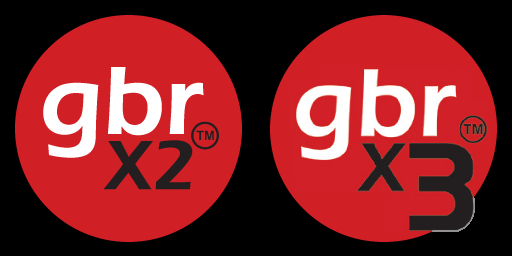Select a PCB product or test fixture and then click on the Test Fixture button to open the Test Fixture Designer module.
Creating a Macaos Integrated Test Jig test fixture involves several steps:
- Select Macaos Integrated Test Jig as the test jig style. If necessary, adjust the active area, and then click on the Redraw fixture button to view the fixture and jig. The active area is displayed as a rounded rectangle, drawn with a thick line.
Use the blue Rotate and Offset buttons to place the board within the active area, as necessary. The board should be placed so that all test pins will be within the active area, and that the centroid of the test pins will be near the center of the active area.
The board offset buttons move the board right or up 10mm per click. If you press the Shift key, then the board will move 1mm per click.
Note: If all of your test points are on the top side of the PCB, you may use the blue Flip button to turn the PCB upside-down in the test fixture editor. This mirrors the board, and allows placing test pins at pads on the copper top layer (rather than the copper bottom layer).
If desired, annotation text may be added to the fixture. Enter the desired text in the Text to place edit box, select a rotation, and click on the Place text button (so that it is down). Then click at the desired location to place the text. Right-click on the edit box to load texts such as the product number or company name.
To delete text, click on the Delete text button (so that it is down) and then draw a selection rectangle around the text to delete.
- Go to the Pins tab. If test points (components with Test point class) have been defined in the (Assembly Data Manager) on a component layer, they may be imported as test pins. See point 7 below for a description of the test pin parameters.
- Support pins for the test circuitry PCB are automatically added near each corner of the PCB. Note: Two of these pins are within the active area. If they are in conflict with test point locations, they must be deleted and manually placed at a suitable location. To do so, select Support/switch as the type of pin to place and choose Test circuitry support pin, click on the Place pins button (so that it is down) and then click at an appropriate location.
- Click on the Place pins button (so that it is down). Integrated Guide pins must be added at holes with at least 1.0 mm diameter. If holes are not available, then Integrated Edge Guide pins may be placed along the board edges, Integrated Support pins must be placed at suitable locations under the PCBA. There should be at least 4 guide/support pins.
Place test pins at the appropriate test points. Select Test as the type of pin to place, choose a pin receptacle, and then click on the Place pins button (so that it is down). Then click at the desired location to place the pin.
Note: The standard pin receptacle is R100, which is suitable for 2.54 mm center-to-center spacing. If necessary, the R75 receptacle (for 1.91 mm spacing) may also be used. Receptacles for smaller spacing are not available for the Macaos Integrated Test Jig.
When placing a test pin, the following should be specified:
- Designator and pin number (recommended)
- Signal name (recommended)
- External connector pin (optional)
- Test pin head style (required)
This information is used to generate a wiring list for the test fixture and to insert the proper test pin into each receptacle.
Although not recommended, the pin location and/or hole diameter may also be modified.
Note: The minimum allowed edge-to-edge spacing between receptacle holes is 0.4mm
To edit a test pin, right-click on the pin in the list. Guide/support pins are not normally shown in the list. Right-click and choose Show guide pins in list to make them visible.
To delete pins, click on the Delete pins button (so that it is down) and then draw a selection rectangle around the pins to delete.
- As test pins are added to the fixture, the centroid of the test pins is shown as a hexagon. The press point will be adjusted to be near the centroid when the test jig is assembled.
If desired, specify the location of the activation push button switch, which may be used to activate the test circuitry when the test pins have made contact with the test points on the PCB under test. A post will push the button when the jig is in the lower position.
Select Support/switch as the type of pin to place, choose Activation switch, click on the Place pins button (so that it is down) and then click at an appropriate location. The switch should be placed near the edge of the active area, at a position which does not conflict with any test pins.
- Note: If desired, you may go to the Z-axis tab to view the vertical configuration. However, since the Macaos Integrated Test Jig is delivered fully assembled, this is not strictly necessary.
- When you are finished placing pins, click on the Publish button to publish the test fixture product to the Product Browser. While publishing, you will be asked to attach a STEP (3D model) file of the PCBA under test. We strongly recommend that this file be included, as this will help prevent conflicts between the components on the PCBA and the test fixture/jig.
Use the Gerber or DXF button to generate a Gerber or DXF file which contains:
- The outline of the test circuitry PCB.
- 1.3 mm pads, which indicate the test pin locations. On the test circuitry PCB, these should be 1.3 mm plated holes with appropriate padstacks. In a Gerber file, each test pin location is annotated with the Des:Pin of the test point.
- 3.2 mm pads, which indicate the support pin locations. On the test circuitry PCB, these should be 3.2 mm non-plated holes. In a Gerber file, each pin location is annotated with the letter C.
- A 6.5 mm square, 1.25 mm circle and 0.5 mm pad. In a Gerber file, this is annotated with the letter A. The 0.5 mm pad indicates where the center of the activation switch should be placed on the test circuitry PCB. The square and circle provide a graphical representation of the switch outline and the pushbutton. The switch should be an Omron B3SL-1002P or B3SL-1005P (or similar). See the datasheet here.
This Gerber or DXF file may be imported into your CAD system as a guide for development of the test circuitry PCB. The Macaos Integrated Test Jig is supplied with all test pins and receptacles inserted into the jig’s receptacle plate. The receptacle plate may be easily removed from the jig for attachment of the test circuitry PCB to it.



